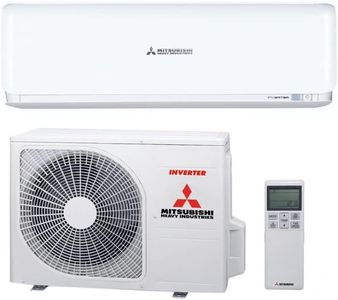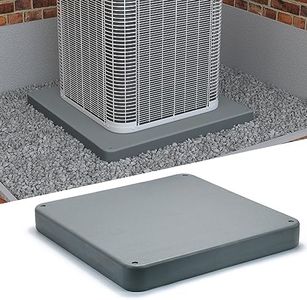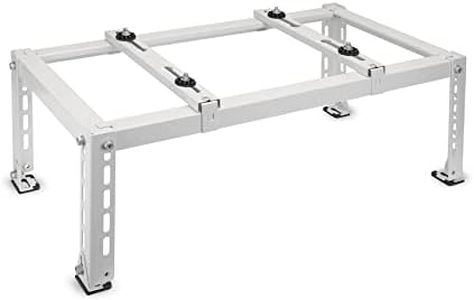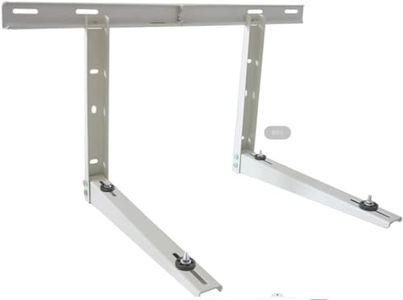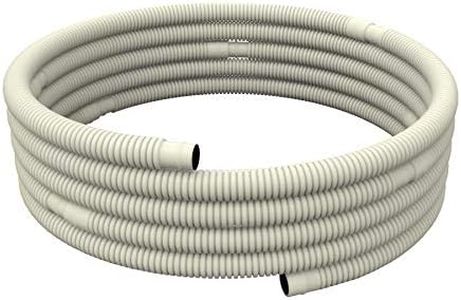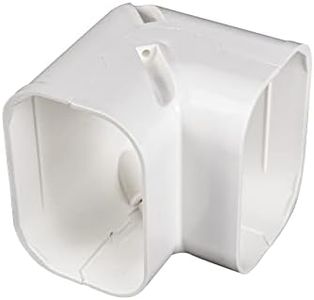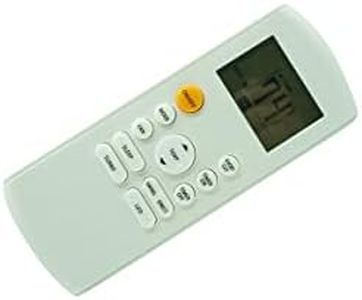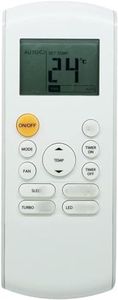We Use CookiesWe use cookies to enhance the security, performance,
functionality and for analytical and promotional activities. By continuing to browse this site you
are agreeing to our privacy policy
9 Best Mini Split Units
From leading brands and best sellers available on the web.By clicking on a link to a third party's website, log data is shared with that third party.
Buying Guide for the Best Mini Split Units
When looking to buy a mini-split unit, it's important to focus on how well the unit will fit your space, the climate you live in, and your preferences for things like noise and style. Mini-split units are a popular choice for heating and cooling because they're efficient, easy to install, and allow for zoning (controlling temperatures in individual rooms). To make the best choice, you should understand a few key features and consider how you want to use the unit, whether it’s for a single room or an entire house, and think about your comfort expectations.Cooling/Heating Capacity (BTU)This value, measured in British Thermal Units (BTU), tells you how much cooling or heating power the unit provides. It’s important because if you choose a unit with too little power, your space won’t reach a comfortable temperature, but if it’s too powerful, it will waste energy and may not remove humidity effectively. BTUs usually range from about 9,000 for small single rooms to 36,000 or more for larger spaces. To find the right fit, consider the size of the room you want to condition: small rooms (up to 350 sq. ft.) need lower BTU, medium rooms (350-700 sq. ft.) need mid-range BTU, and large open areas or multiple rooms need the highest BTU. Think about insulation, sun exposure, and ceiling height as well, since these affect how much heating or cooling you’ll need.
Energy Efficiency (SEER Rating)The SEER (Seasonal Energy Efficiency Ratio) rating measures how efficiently a mini-split uses electricity while cooling. A higher SEER rating means the unit uses less energy to do the same job. This is important if you want to save money on electricity bills and reduce your environmental impact. SEER ratings typically range from around 13 to over 20. Low SEER units are less expensive up front but use more electricity, while high SEER units are more efficient and save energy over time. If energy efficiency and long-term savings matter to you, aim for a higher SEER rating.
Number of ZonesMini-split systems can control temperatures in just one room (single-zone) or several rooms (multi-zone). This is important if you want flexibility and comfort throughout your home. Single-zone units are simpler and easier to install, while multi-zone units let you adjust climates in different areas. Think about which rooms need heating or cooling and if you want individual control. If your needs change in the future, having a system that supports expansion can be a bonus.
Noise LevelThe noise level is usually measured in decibels (dB) and tells you how loud the unit will be during operation. This is important if you plan to install the unit in a bedroom, study, or living room where quietness matters. Noise levels for indoor units typically range from 19 dB (very quiet, like a whisper) up to 45 dB (like normal conversation). Lower noise numbers are better for bedrooms and study areas, while higher levels might be acceptable in kitchens or utility rooms. If quiet operation is a priority for you, pay attention to this spec.
Compressor Type (Inverter vs Non-Inverter)The compressor is what cycles the system on and off to control temperature. Regular (non-inverter) compressors operate at full speed or shut off, while inverter compressors can adjust their speed for more precise temperature control and better efficiency. This is important because inverter units tend to run quieter, maintain a more steady temperature, and use less energy. If you want steady comfort, quieter operation, and lower energy bills, an inverter model is the better choice.
Installation and Mounting OptionsMini-split indoor units can be wall-mounted, ceiling-mounted, or floor-mounted, and each option impacts aesthetics and air distribution. This is important for both how your space looks and how effectively the air is distributed. Wall-mounted units are the most common and easiest to install, while ceiling and floor mounts can be chosen for specific room layouts or preferences. Consider the design and layout of your space, as well as furniture placement, to decide which installation style is best for you.
Air Filtration/Quality FeaturesMany mini-splits come with air filters or special features for improving air quality, such as HEPA filters, ionizers, or UV lights. These are important if you have allergies, pets, or just want cleaner air inside your home. If air quality matters to you or if someone in your household has respiratory sensitivities, look for units that highlight advanced filtration or purification features.
